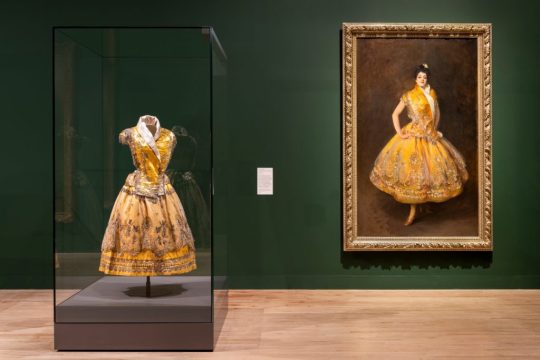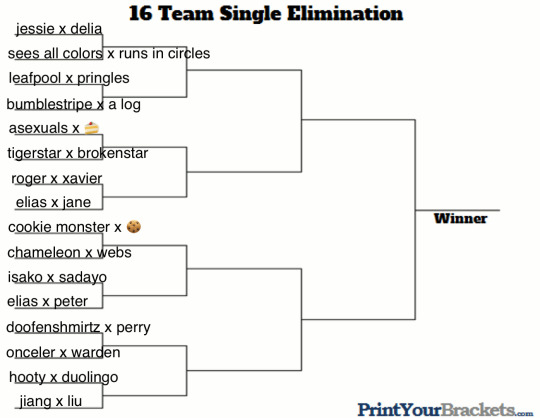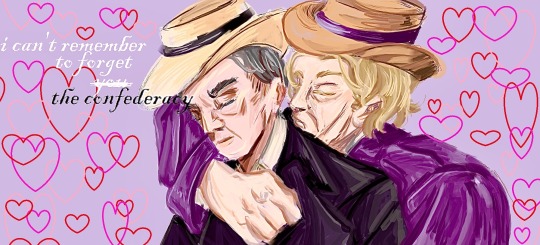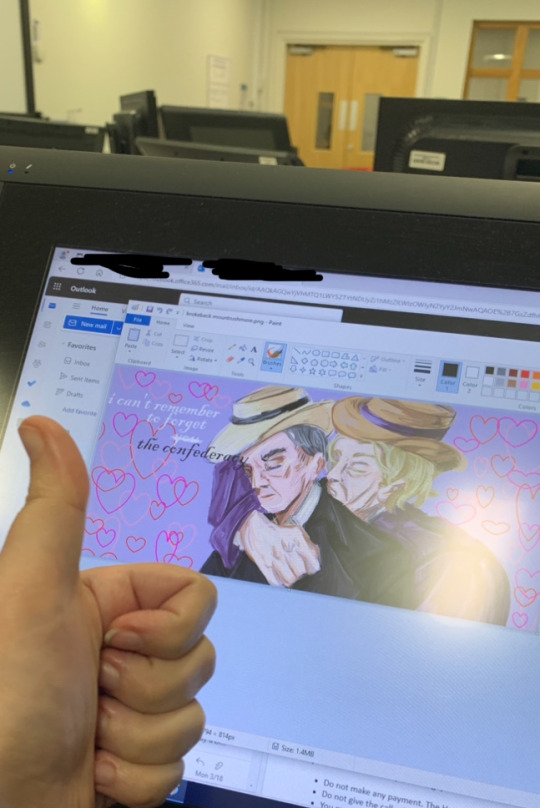#woodrow x wilson
Explore tagged Tumblr posts
Text

my @battfishe wanted more of them !!!!!!!!!!!!!!!!!
sketvch under the cut

#wes drew a thing#wilson#wilson p higgsbury#woodrow#wx-78#wilson x woodrow#woodrow x wilson#wx-78 x wilson#wilson x wx-78#wxwil#wilwx#idk which#don't starve#dont starve#ds#don't starve together#dont starve together#dst#wxson
46 notes
·
View notes
Text








various magmas
#mei art#dst#dst wilson#wx 78 dst#wx 78#wx-78#wx78#dst wx 78#dst wx78#wx78 dst#dst wx-78#wx-78 dst#i forgot how many tags they had#wxson#dst woodrow#woodrow dst#wildrow#i guess??? idk wilson x woodrow ship name#wilson dst#wilson percival higgsbury#wilson p higgsbury
82 notes
·
View notes
Text
hello non-sdv/sdve president mutuals. how do you feel about olivia (or as i like to call her, Stardew Edith Wilson)


#MADE A BUNCH OF MONEY AT A BIG COMPANY AND THEN RETIRED WEALTHY ASF?!?!?!?!?#HER FUCKING CANONICAL LOVE INTEREST IS MORRIS BTW.#YEAH THAT FUCKING FAG WITH THE BLUE HAIR#CAN YOU BELIEVE THAT#ITS LIKE IF WOODROW X EDITH WAS JUSG A GAY MAN AND A LESBIAN INSTEAD OF 2 HETS THAT ARE JUST SO FREAKY THEY SEEM LIKE A GAY AND A LESBIAN#olivia you better drop ALL THOUGHTS of his stupid ass RIGHT NOW#YOU NEED TO BE WITH ME AAAAUAUUUGHHHFUJHHFHHHHHH#this is the closest i will ever get to marrying edith wilson i think
19 notes
·
View notes
Text
It's over. It's so FUCKING over.
THEY TOOK A PHOTO OF MY ROOM AND MY WOODROW WILSON SHRINE.
#woodrow wilson#complained about this on insta now time to complain about it here#I'VE TRIED TO KEEP THAT A SECERT BUT NOW WHAT THE HELL#At least my Hussie x Jimmy poster wasn't in view (I hope)#My FDR death headline poster was also most likely seen...#My MCR poster too..WHICH IS AWESOME THOUGH
7 notes
·
View notes
Text

CHP 1 - M.I.A Page 6
Previous || Next
ICRINGE ALERRTTT XPXPXP
Spida man
I LOVE SO MUCH
THE EYE CLOSE UP IS SO COOL
#NESIAS Chapter One#M.I.A#Not Every Star Is A Sun COMIC#noteverystarisasun#NESIAS#not every star is a sun#oc;asher wilson#oc;anthony woodrow#lego monkie kid comic#lego monkie kid fan-comic#lmk comic#lmk fan comic#liu er mihou#lmk macaque#oc x canon#lego monkie kid#lego monkie kid oc#monkie kid#monkie kid oc#lmk#lmk oc#demon slayer oc
23 notes
·
View notes
Text
enby couple and their mad scientist bestie

i swear im sound of mind
30 notes
·
View notes
Text
Fashion, Identity, Painting
Renowned for his captivating portrait paintings, Tate Britain’s exhibition Sargent and Fashion explores the acclaimed works of John Singer Sargent, delving into his unique approach to portraying his subjects. Sargent used fashion to express identity and character and often chose his subjects’ attire or manipulated their clothing to achieve his desired artistic effect. The exhibition features…

View On WordPress
#art#Carolus-Duran#Ellen Terry#John Singer Sargent#ko-fi#painting#patreon#Portrait of Madame X#portraits#Robert Louis Stevenson#royal academy of arts#Sargent and Fashion#tate britain#Woodrow WIlson
0 notes
Text
Title: I never had no regrets
Ship: Mike x Dude (old edition), Mike & Colorado Ryan
Words: 3.3k
Warnings: Major character death, religious themes
Description: Mike and Dude's last day together.
Dude groaned softly as he eased himself into his chair on the front porch. Dude rubbed his face and sighed. Mike came out of the house with two cups of coffee and the newspaper. Dude took the newspaper appreciatively and opened it. Mike sat down next to Dude silently. It was a warm morning, and they were dressed in their lightest patterned shirts. Dude still left his partially unbuttoned as he had in his youth.
July 16th, 1914. The little town hadn’t had its own newspaper when Dude came into it about 50 years ago. All the news was word of mouth then. The town was hardly much bigger now than it had been in 1860 but there were cars, and a pharmacy with a soda fountain had finally made its way over. Dude could drive a car now but he didn’t like to. Unfortunately, it was harder getting on horses now than it had been even 5 years ago. It was harder getting around at all.
The newspaper talked about how the school that had been built only 20 years ago was getting on. There was a war brewing in Europe. Woodrow Wilson was doing this and that for domestic policy.
“Anything good?” Mike asked him.
“The school’s doin’ well.”
Mike shook their head. “How this damn town lasted almost 30 years without a school, I’ll never know. You’d think they wanted a bunch of uneducated hicks.”
Dude frowned at them.
“I don’t mean you, Dude. You weren’t born here.”
“I’m an uneducated Texan hick, anyhow.”
“Well, you can read that newspaper,” Mike tried with some levity.
Dude only frowned more.
Mike shook their head. “Old age has killed your sense of humor.”
He laughed. “All these years, and you still ain’t funny.”
Mike feigned offense, but conceded, “One of us has to be the grumpy old man.”
Dude smiled. A couple of his teeth had fallen out and his lips were worn. He still had a pretty smile. Mike smiled back at him. They took one of his wrinkled hands in theirs. They frowned at a bruise on it.
“You better start being more careful Dude, you aren’t a young man anymore-”
Dude waved his hand. “Ah, you still worry too much. No man ever died of a bruise.”
“Well, if you fall-”
“Fall?! Who’s fallin’? Not me, that’s for damn sure,” Dude interrupted in indignation.
“You sound more like Chance every year.”
Mike and Dude looked vaguely in the direction of the jail, as if Chance could still be there. Dude pouted. “Am I really a hardass?”
“No, baby, but you’ve gotten especially stubborn and prideful.”
He sighed. “Yeah, I know. Gettin’ old…it ain’t a cakewalk.”
Mike squeezed his hand. “I’m here for you, always.”
Dude got a very serious look on his face. “I know. I only wish I could be there for you. My time’s coming, honey.”
Mike tilted their head. They tried to laugh. “You say that like you’re dying tomorrow.”
“I’m serious. I feel Heaven callin’.”
“But you’re sure it’s Heaven?”
“At night, I hear the angels.”
“Baby, you’re just dreaming. Just dreaming. Come on, let’s go for a walk in town, huh?”
Dude grabbed his old worn hat and the pair walked into town. It was still small, but it had acquired more streets in the past two decades. What had once been a single street, turned into 6 streets. Mike and Dude walked past the Wells Fargo that was still in the same spot next to the new pharmacy.
Dude stopped. “We should get two ice cream sodas.”
They frowned. “This early in the morning? Are you sure that’s good for-”
“Mike, I’m 75 years old. I know what’s good for me.”
“Oh, I know. I just care about you.”
Dude kissed their hand and they walked inside the pharmacy and came up to the counter. “Two coca-colas with chocolate ice cream, please.”
“That’ll be 10 cents,” said the man behind the counter. Dude dropped a dime on the counter.
Dude sat down carefully. “You know, I remember the first time I had a coca-cola.”
Mike laughed. “So do I. Did it still have cocaine in it then?”
Dude furrowed his eyebrows. “I don’t know. When did they take it out?”
“Ohhh, about 10 years ago.”
“Yeah, it probably did,” Dude said. “What a fool thing to drink.”
They both laughed.
The man behind the counter put down their ice cream sodas and they thanked him. They had their beverages and said little else.
Dude rolled himself a cigarette as they exited the pharmacy.
“They come pre-rolled now, Dude,” Mike teased.
“I like to roll ‘em myself.”
He pulled a lighter out of his pocket and lit his cigarette.
“You used to use matches,” Mike said reminiscently.
He shrugged. “It’s nice not to have to strike a match against something.”
Mike blushed for the first time in a long time. “You know, I always thought you were pretty when you smoked.”
Dude blew smoke out of the side of his mouth and asked amusedly, “Yeah?”
“Still do.”
Mike and Dude walked home.
Later on that evening, Mike lit the stove to reheat some soup they’d made yesterday. Dude sat at the table, watching.
“Honey, could you…” Dude stopped himself. “How ‘bout you fry up that good cut of pork belly in the icebox for me? And make me a nice glass of sweet tea, huh?”
Mike turned around. “I thought the pork belly was for when Colorado and his wife and kids come over on Saturday?”
Dude’s eyes were distant. “Mike, I ain’t gonna be here Saturday.”
Mike’s heart felt like it had been thrown into the bottom of the ocean. They bit their lip then released it. They told him sharply, “Dude, that is not funny.”
“I’m not bein’ funny. Mike, I’m not making it to Saturday.”
His mouth was drawn into a straight line. He looked 10 years older.
Mike lowered the flame on the stove and sniffed. “Are you sick? Was it the ice cream soda? Should I send for the doctor?”
Dude shook his head. “I’m fine. I don’t need no doctor.”
Mike looked at him for a long time. “Are you sure about the pork belly?”
Dude nodded. “Fry it up for me…with a couple of mashed potatoes and…do we still have the green beans?”
Mike nodded. “Alright. I’ll heat up this soup for me.”
Mike made Dude’s dinner exactly how he asked for it, and sat down with him to eat.
Dude always insisted on saying grace before meals, so the pair did so.
“When you pray tonight, could you ask God to take away whatever feeling you’re having?” Mike asked. They almost considered praying themselves. Please let God listen for once.
Dude gave them a small smile. “I will. But, I want you to know something. I never was any damn good with words. Mike, these past 34 years have been the best of my life. You’re the best thing that ever happened to me. If I could do it all over, I’d do it all the same so I always got to you. I wouldn’t trade a minute of it. I don’t regret not having kids with you, and when I go, don’t you think I ever did. I know how your mind is. Don’t go dwellin’ on any bad moment we had. I’m not mad at you. You’re the best damn husband a fella could have. I’m going out of this world grateful for you, you understand?”
Mike wiped their eyes. “I understand.”
Dude shoveled down his dinner like a starving man.
“Hungry?” Mike teased.
“Always for your cookin’, honey.”
Mike shook their head fondly. “You did get soft. You old sap.”
Dude grinned. “I was always soft on you.”
Mike reached out to stroke Dude’s face. “You better be here Saturday, Dude.”
“I’ll try, honey. I will.”
When the pair went to bed that night, Dude was insistent on sleeping naked as they did more often when they were younger. Mike didn’t mind Dude’s aged body. They were in love with every wrinkle, bruise, and sag. He retained some of his tan, though his days in the sun were shorter. He’d put on a bit of weight, but Mike loved that all the more. He still smelled like coffee and tobacco. Dude took a deep sniff of Mike’s hair.
“Always fruity. Used to be cucumber. Now more peachy.”
“You’re so handsome, you know that?” Mike whispered.
“As handsome as I used to be?”
Mike hugged Dude closer. “More handsome.”
“You’re lyin’, but I love you.”
“I love you too.”
Mike woke up slowly that morning with Dude still pressed close to them. They felt Dude’s thinning hair and sighed. As their hand fell onto his neck, their heart stopped dead in their chest. He was stone cold. Mike kept their eyes closed as they pushed themselves away. Their heart pounded in their chest. They almost tumbled off their bed, but were able to steady themselves. They opened their eyes slowly, to their husband still on the bed. He could almost have just been asleep, except his skin had become a strange shade of grey. They reached out slowly and felt his cheek. Cold. They knelt down and kissed him lightly on the forehead.
“Dude, I should have made a big speech to you too. You knew I loved you. I know you did. I don’t want to go on without you. But I will baby, I will. I guess I’m glad I knew…or had an idea. I hope you were always right and you’re in Heaven. Having breakfast with the angels. You’d fit right in. You are my angel. Watch me carefully, huh?”
For a long while, Mike didn’t move. They kneeled in front of the long gone Dude and caressed him. They held back tears. After some long amount of time that could have been an hour or two, they managed to stand. Their knees groaned on the way up. They grabbed their robe from the closet and tied it around themselves. They neglected putting on any shoes.
Mike walked out of their house into the Friday morning air. The warmth of the morning was an insult to how dead and cold Mike felt. They managed to get to Colorado’s farm. He had a good deal more land than Mike and Dude had ever acquired. With his 6 children, he needed it a lot more. They stumbled across the pathway past Colorado’s group of cows. They chuckled, remembering their sole cow back at the ranch. What a meager life they had lived.
Mike was greeted by Colorado’s youngest, Abilene. She had long brown hair, and favored her father. She was as girlish cute as he had once been boyish cute. She smiled.
“Why, good mornin’,” she drawled. “I thought me’n Pa ‘n Ma weren’t coming over ‘til tomorrow?”
Mike was grave. “I need to talk to your father.”
Abilene frowned then hurried inside. Colorado soon replaced her in the doorway. His brown hair was speckled with gray, and his boyish smile had flattened into a handsome, but aged grin.
“Hey, Mike. What can I do for you?” he asked.
“Dude’s dead, Colorado.”
His grin fell off his face. He laid a hand on Mike’s shoulder. “When?”
Mike’s resolve broke, and they cried. “Last night I think. I woke up this morning and oh, God.”
He pulled them into a hug. “It’s gonna be alright. You can stay here with me and Jennetta for a while, until we get the ranch straightened out.”
Mike shook their head. “No, it’s my ranch. I’m not selling. Dude and I built it together. It goes when I go and not a second before.”
“Did Dude write out a will?”
Mike shrugged. “I don’t know. All we have is the ranch, a car, and some livestock. And, who’s he going to leave it to if not me?”
“Where’d he want to be buried?”
Mike paused. “On the ranch.”
“Alright. I’ll go talk to the coroner about a death certificate, and we’ll see about a coffin and a headstone.”
Mike nodded solemnly. “Thank you.”
Colorado invited Mike inside to sit down at the coffee table while Colorado went out to set up Dude’s final proceedings. Jennetta made Mike a fresh cup of coffee.
“Sugar or no?” she asked.
“All the sugar you have.”
She laughed. She put a few teaspoons of sugar in Mike’s coffee along with a little milk. “You know, Abilene is getting married next month.”
“That boy, uh, Tommy?”
“Thomas, yes.”
“Well, congratulations,” Mike said to Abilene, who had just come back into the room. “One person loses a husband, another gains one. The world goes around.”
“I’m sorry for your loss,” said Abilene.
Mike stared into their coffee cup. “So am I. It’s so stupid but I thought somehow I would go first.”
“That’s not stupid,” Jennetta disagreed. “I hope the same thing about my Colorado sometimes.”
They laughed. “You’re only a year younger than Colorado.”
She feigned a smile. “Yeah…Mike…Dude’s in Heaven waiting for you.”
Mike frowned. “I don’t know. I don’t know about all that God stuff. I know Dude believed, and you and Colorado do. Hell, almost everyone in this little town does.”
“You could come to church with us on Sunday. Come talk to God in his own house, he’ll listen.”
“I appreciate that,” Mike said. “I just don’t feel quite comfortable in a church.”
“Isn’t that where Dude’s funeral service is going to be?”
Mike pondered this. “Yeah, if he wrote a will…yeah. Death’s harder for the living. I have to give him a good celebration. I have to make a pie, and a good roast, and all of Dude’s favorites. I couldn’t let him down…especially if he’s up there watching.”
“Mike, everyone knows how much you adored him. No one in this whole town is going to think you didn’t if you let yourself grieve. Don’t worry about the service or the party. Tell me Dude’s favorites. We’ll handle everything. You don’t even have to make a speech if you’re not up to it.”
Mike shook their head. “I’ll allow everything else but I have to make a speech. I have to properly wish my husband goodbye. Don’t take that from me.”
“Wouldn’t dream of it.”
“We have to bury him soon…don’t we?” Mike asked quietly.
“Next couple of days would be best. A wake tomorrow, maybe. Closed casket the second day with a service and a communion if you wanna be Catholic about it.”
Mike tapped their fingers on the table. “I hope I go soon.”
“You don’t mean that.”
“No. I don’t. Dude wouldn’t want me to think that way…but I can’t help it. He’s not here, and…it’s only been a few hours. It’s already hard. I don’t know if I could live another twenty years without him.”
Jennetta looked at Mike sympathetically. The rest of the morning was in dead silence.
On the day of the funeral, Dude looked as beautiful in his casket as a dead person could. Mike knew he wasn’t sleeping, but if they ignored the color and temperature he was, they could almost pretend. Mike had him dressed in one of his blue shirts, buttoned low; his worn brown cowboy hat, a pair of tight pants, and shoes. No spurs. His gunbelt and guns would be buried with him later. Mike held his black ascot in their hands, thinking. Was he really Dude without it? Could Mike bear to part with it? Mike kissed the ascot, and gently maneuvered his head to wrap it around his neck. Their Dude.
“We found the will,” Colorado said as he came up behind them.
“And?”
“‘I leave everything to my darling spouse, Mike’,” He quoted. “You were right about the burial. Right on the ranch.”
My darling spouse. Oh, Dude.
“Anything else?”
“You did right by him, Mike,” he reassured. “He’d be happy with all of it.”
Mike sniffed. “I hope so.”
Mike sat down, and a service was started. They tuned it all out, trying not to weep. The next thing Mike knew, the casket was closed and they were carrying it back to the ranch. Mike did all they could not to keep touching the casket, as if comforting their dearly departed husband. The walk to the grave that had been dug during the service was the longest walk of Mike’s life. It had been dug by a man who had been an apprentice of the previous mortician, Burt, and one of Colorado’s sons. Mike almost wanted to fall into it themselves.
The casket was lowered slowly into the hole as the priest said some final words. With Chance and Stumpy gone, Mike, Colorado, and Feathers (who had been phoned quickly enough to drive over) were the only ones to make speeches.
Feathers’ speech went: “Dude was a wonderful man, a great deputy, sheriff, and friend. He made it through hardships in his life, some of which we all witnessed. He was always considerate of others. He would be the first to put his life on the line to defend this town, even if the town wouldn’t return the favor. He was brave, loyal, and charming. I’m glad to have known him.”
Then Colorado’s: “When I came into town all those years ago, I didn’t expect to lose my boss, Pat Wheeler, and gain so many great friends. I was always a smartass to Dude and Chance, and they were like brothers to me. We made a damn good team. Dude was the man who avenged Wheeler, and earned my respect. I had so many laughs with him, and his partner, Mike. Until I found my Jennetta, we spent many wonderful Thanksgivings and Christmases together with the gang. I’m thankful for all of it.”
And finally Mike: “My husband was the bravest man I’ve ever known. He was loyal, kind, funny, and resilient. He was also sensitive, stubborn, and prideful. He was so caught up in defending his manhood sometimes. I know Dude wanted children, and I appreciate that he never resented me for not having any. He was always accommodating to me. Until I found Dude, I thought I was unlovable. I thought I would die alone. Physically, I will, but mentally, I will know that I was loved for the best 34 years of my life. Dude’s heart is still with mine, even if his body isn’t. I’m beyond grateful for every moment I got to care for him. He was the most beautiful and wonderful man I have ever met. I will always adore him. With all my heart, I hope to be reunited with him when I pass, so we can spend eternity together. I owe everything to my one and only, my husband, my lover, my best friend, and my soulmate. I never want to live in a world where I didn’t meet you. Sleep well, I’ll be there soon.”
Mike teared up and ran into their house to sob their heart out. Gone. Forever. They were all alone in the world. Not alone. There was Colorado and his family. Feathers. The town. None of them could ever replace Dude. No one could ever replace Dude.
Colorado found them after everyone else had gone home.
“D’ya wanna see the epigraph?” he asked softly.
Mike nodded and he helped them stand. He led them outside to where Dude’s grave was freshly covered with dirt. The sun was getting low in the sky but Mike could still make the words out.
It was Dude’s name, his years lived (1839-1914), and the words: Beloved husband, friend, and sheriff.
Mike smiled. “It’s beautiful, Colorado. Thank you.”
“If you ever need anything, you let me know, alright?”
“I will. Thank you for everything.”
Colorado walked home. Mike knelt at Dude’s grave and talked for a long while. They went to bed that night and dreamed of Dude.
39 notes
·
View notes
Text
Just had the worst experience of my life (Woodrow Wilson pointing a gun at me and forcing me to read his 90k words 1980's American Politics x Library of Ruina fanfic on AO3)
#killoraptor.txt#library of ruina#yes this is a real fic and I hate that I'm invested in it#project moon#roland works together with george hw bush to fight the soviets#and carmen starts becoming catholic
41 notes
·
View notes
Text


my girlfriend commissioned me for gay people yayy
full version on @re4nim4tor + sketch under the cut

#wes drew a thing#don't starve#dont starve#ds#don't starve together#dont starve together#dst#woodrow#wilson#wx-78#woodrow x wilson#wilson x woodrow#wilwx#wxwil#wilson x wx-78#wx-78 x wilson
28 notes
·
View notes
Text




Here are our contenders for The Crackship Awards 2024!
Bracket 1:
Shadow Kirby x Prince Fluff vs Randy Cunningham x Ruby Gillman
Roronoa Zoro x Sasuke Uchiha vs Elizabeth Afton x Charlie Emily
June Eggbert x Chiaki Naname vs Vriska Serket x Hatsune Miku
Mari from Omori x Sayori from Doki Doki Literature Club vs Bee x Fionna
Wonder Woman x Talia al Ghu vs Posiedon x Incitatus
Firestar x Waffles vs Graystripe x Waffles
Kestrel x Coral vs Hatake Sakumo x Ootsutsuki Kaguya
Zhongli × Yip Tak vs Elsa x Jack Frost
Bracket 2:
Bowser x Luigi vs Shrek x Donkey
Samurai Jack x Johnny Bravo vs Scourge x Ashfur
Tigerstar x Arctic vs Gerald Robotnik x Black Doom
Catra & Ashfur vs Lucifer x Adam
Hawkfrost x Leafpool vs Twilight x Mordecai
Vaggie x Ragatha vs Rainbow Dash x Dirk Strider
Jayfeather x His stick vs Gwenpool x Garlic bread
James x Professor Oak vs Needletail x Icicle
Bracket 3:
Jessie x Delia Ketchum vs Sees All Colors x Runs In Circles
Leafpool x Pringles chips vs Bumblestripe x A log
Asexuals x Cake vs Tigerstar x Brokenstar
Roger Raincomprix x Xavier Ramier vs Elias Bouchard x Jane Prentiss
Cookie Monster x Chocolate chip cookies vs Chameleon x Webs
Isako Toriumi x Sadayo Kawakami vs Elias Bouchard x Peter Lukas
Dr Doofenshmirtz x Perry the Platypus vs The Onceler x The Warden
Hooty x Duo vs Jiang Cheng x Liu Qingge
Bracket 4:
Sans x Nagito Komaeda vs TS Woodrow x Phantom of the Bwahpera
The fairy who knocks x The walrus who knocks vs Sofanthiel x Blue Lizard
Manticore x Sphinx vs Barney x Hunter
Norma x Willow vs Pugsley x Swift Wind
Eggdog x Strawberries vs Krestel x Tundra
Blaze x Fruit bat vs Doctors x Apples
Miette x Jorts vs Artificer x Maple Shade
Reigen Arataka x Nagito Komaeda vs Guy Montag x Wilson Smith
81 notes
·
View notes
Text
do you guys think wilson x woodrow is the same thing as wilson x wx78 or is it something different. thoughts
12 notes
·
View notes
Text
DST x Detroit Become Human AU
So obviously i didn't make backstories for everyone yet so here's the few that are 'finished' for now
I came up with the AU and @gommih came up with some ideas too ^^
Robert Wagstaff
A co-creator of androids. He distanced himself from Cyberlife after androids became manufactured worldwide and continued working independently with his assistant android Woodrow.
Wilson (WH300)
An early generation android who was already a deviant the day he was created. Wagstaff knew about his deviancy but let him go, he didn't think it would be too much of a problem as long as the android behaved. (like in the short animation "Kara")
Wilson was made to take care of damaged or malfunctioning androids in Cyberlife and to overall assist the employees. Unfortunately his deviancy affected his work (being forced to disassemble his own kind isn't great) and the employees didn't fail to notice that. They gradually became more frustrated with him, until one day Wilson overheard them talking about a new, more advanced, android that will soon replace him. Wilson knew that he would end up being disassembled and decided to run away from the Cyberlife building. He disguised himself as a human employee to go unnoticed.
Wendy & Abigail (WK200)
They were both 'adopted' in the same household since the parents wanted twins. They both have a pretty normal childhood until Abigail started showing sign of deviancy. Children androids were supposed to simulate more emotions than regular android but they weren't supposed to be disobedient. They both got sent to Cyberlife, Abigail for repairs and Wendy for a checkup to make sure she doesn't have the same problem as her sister since they are the same model.
The technicians deemed Abigail as unsalvageable. The 'parents' were upset and complained about losing their money, so they decided to transfer some of Abigail's code to Wendy before destroying her, so that they have both androids in one (a mix of their personalities, memories, etc...). After losing her sister, Wendy became aware that her 'parent's' love was entirely conditional and that if she ever disobeys she'd be destroyed. She runs away a few days after Abigail's destruction.
Abigail is still somewhat there thanks to the code the technicians transferred. She is present in Wendy's mind palace. Wendy often goes into 'sleep mode' to spend time with her sister.
Woodrow (WX78)
One of the oldest models of android made. They were made by Wagstaff to be his personal assistant. Wagstaff treated them well, he talked to them as if they were a human.
Woodrow slowly deviated of the years. One day, they openly admitted their deviancy to Wagstaff who didn't have a problem with it. Everything was going well, expect that Woodrow started getting ideas about freeing androids and starting an android revolution. They talked about it a bit to much for Wagstaff's taste and he started getting worried about Woodrow's ideas and their consequences. Wagstaff was pro-android but not that much. He unexpectedly sent Woodrow to be destroyed.
They were dumped in the junkyard, heavily damaged. They repaired themself as well as they could, using the parts lying around that were compatible with their unique model. They lost most of the function that could make them look human. Their voice was also damaged, making them sound more robotic.
After this incident they starting feeling hatred towards all humans and stopped trusting them entirely. They started going by their model number, WX-78, to distance themself even more from humanity.
Webber (WK500)
Webber lived in a good family where he was treated well and lived a pretty normal life. However, while exploring a bit to far from home, he met a man who introduced himself as Zlatko and who invited him to his house. Webber, as the adventurous and way too trusting child that he was, accepted the offer.
Zlatko heavily modified Webber. He transformed him using parts of animal androids which ended up making him look spider-like. He worked around the house, helping Zlatko with his experiments and doing chores. He would often go see the other less lucky androids trapped in the basement to keep them company.
he eventually manages to escape (haven't decided how or with who yet)
#dst#dbh#dont starve together#detroit become human#dst wagstaff#robert wagstaff#dst wx78#dst wx 78#dst woodrow#dst wilson#wilson higgsbury#dst wendy#dst abigail#dst webber#crossover#dst dbh au#rambling🦇
40 notes
·
View notes
Text

that relatable feeling when you don’t want to do more work in class so you attempt to create former president woodrow wilson x also former president john tyler brokeback mountain yaoi fanart on ms paint instead
if these computers are monitored i’ll cry btw

#woodrow wilson#john tyler#u.s. history#american presidents#fanart#£9k per year to fuck around and find out
25 notes
·
View notes
Text




























The United States adopted The Star-Spangled Banner as its national anthem on March 3, 1931.
National Anthem Day
In the early years of the republic, there were a few popular patriotic songs, such as "Yankee Doodle" and "Hail Columbia," but there was no national anthem. Today we celebrate the "The Star-Spangled Banner," which became the official national anthem of the United States on March 3, 1931. The song was inspired by a real flag and events that took place surrounding it.
The War of 1812 began in June of 1812. The United States achieved some early victories, but after France and Napoleon were defeated at Waterloo in April of 1814, the British were able to focus more on the war in the United States. After invading Washington D.C. and setting fire to The White House and Capitol in August, the British turned their attention to Baltimore, Maryland.
On September 13, Baltimore's Fort McHenry withstood a 25-hour bombardment from the British Royal Navy. Early on the morning of September 14, soldiers hoisted a large (30 x 42 feet) American flag over the fort. At the time, Francis Scott Key, an attorney who worked in Washington D.C., was on a ship in the harbor of Baltimore. He had been working to negotiate the release of Dr. William Beanes, who had been captured in an earlier battle. Although he was able to secure Beanes' release, the Americans were told they could not leave until the bombardment was over. As Key saw the flag wave over the fort, he wrote the first verse of what would become "The Star-Spangled Banner." At the time he named it "Defense of Fort M'Henry."
Sometime shortly thereafter, Key wrote three more verses. (Today just the first verse is commonly sung, with the fourth verse sometimes being used at formal occasions.) The verses were issued on a broadside by a local printer on September 17, and they were printed in two Baltimore newspapers, the Baltimore Patriot and The American, on September 20. The words were then printed by more papers along the East Coast.
Key set the verses to the tune of an English drinking song called "To Anacreon in Heaven" (also known as "The Anacreontic Song"), which was written in 1775 by John Stafford Smith and originally performed by the Anacreontic Society, a gentlemen's club in England. The song eventually became popular in the United States. Its subject, Anacreon, was an ancient Greek poet known for loving wine. Key had previously used the tune to accompany verses he had written in 1805 about American naval victories in the Barbary War. In fact, some of the wording he had used in the verses for that war were similar in nature to those in "Defense of Fort M'Henry." By one account, it was Key's brother-in-law who noticed the new verses fit the same melody, and convinced him to use it again. In October, Baltimore actor Ferdinand Durang gave the first public performance of the song, and the following month the song appeared in print under the title "The Star-Spangled Banner" for the first time.
The song gained in prominence following the Civil War, because it was about the flag and the flag was increasing as a symbol of national unity at the time. It became a staple of Fourth of July celebrations and other patriotic events. In the 1890s, the U.S. military began using it for ceremonies. In particular, it became the song of the Navy's flag raisings.
Woodrow Wilson signed an order in 1916 to make "The Star-Spangled Banner" the national anthem, but it did not become the official anthem until Congress passed a law fifteen years later. Wilson also asked the Bureau of Education to standardize the song, as there were a few different versions at the time. Five musicians worked on the song, including John Philip Sousa. The new version was first performed on December 5, 1917.
"The Star-Spangled Banner" made its major-sporting-event debut on September 5, 1918, at Chicago's Comiskey Park, during the first game of the World Series between the Chicago Cubs and the Boston Red Sox. The United States was in World War I at the time, and there was some added emotion in the air because a bombing had taken place the day before at the Chicago Federal Building. A military band played the song during the seventh-inning stretch, and players and fans saluted. The song soon began being sung at other baseball stadiums, and then spread to other sports.
On April 15, 1929, Rep. John Linthicum (D-Md.) introduced a bill to make "The Star-Spangled Banner" the national anthem. He had previously introduced such a bill four times before, going all the way back to 1918. As part of his district was in Baltimore, some thought that he was pushing for the bill for himself and for his district more than he was doing it for patriotism and the country. The bill eventually got a hearing before the House Judiciary Committee, and Linthicum presented them with a petition with 5 million signatures, which had been organized by the Veterans of Foreign Wars. He also presented them with resolutions and letters from 150 organizations and messages of support from 25 governors. The House approved the bill on April 21, 1930, and the Senate did on March 3, 1931. President Herbert Hoover signed it the same day and the "Star-Spangled Banner" became the official national anthem of the United States.
Although it has largely been looked upon as a patriotic song about freedom, it has not been without controversy. Key owned slaves for many years, including at the time when he wrote the song, which includes the line "the land of the free." He eventually freed his slaves, and his position was that slaves should return back to Africa. In recent times, some have used the song to protest racial injustice, by staying seated or kneeling when the anthem is played at sporting events. They have seen this as a patriotic gesture, while others have seen it as quite the opposite.
And what became of the actual star-spangled banner that the song was written about? The flag had been sewn by Mary Pickersgill with the help of a few others. After the battle, it was given to George Armistead, the commander of Fort McHenry. He died a handful of years later and his widow, Louisa, received it. It stayed in the family for many years and was rarely seen. In 1878, the Armistead's grandson, Eben Appleton, inherited the flag. He allowed it to be displayed at Baltimore's sesquicentennial in 1880, but then put it in a safety deposit box because he wanted to preserve its condition. He loaned it to the Smithsonian Institution in 1907, and donated it permanently to them in 1912, with the request that it be on display for the public. In the late 1990s, a preservation project was undertaken. The flag can be visited today at the Smithsonian's National Museum of American History.
How to Observe National Anthem Day
There are many ways to celebrate the day:
Read, memorize, and sing "The Star-Spangled Banner."
Visit the original Star-Spangled Banner at the National Museum of American History.
Visit the home where the flag was sewn.
Explore Fort McHenry, where the flag once flew.
Read a book about the "Star-Spangled Banner," such as Marc Ferris' Star-Spangled Banner: The Unlikely Story of America's National Anthem or Marc Leepson's What So Proudly We Hailed: Francis Scott Key, A Life.
Watch a documentary about "The Star-Spangled Banner," or watch a video about the Star-Spangled Banner exhibit.
Watch or listen to noteworthy renditions of the "Star-Spangled Banner."
If you are not from the United States, find out if your country has a national anthem, and learn about it and its history.
Source
#Earthquake Lake#Missoula#West Yellowstone#Montana#Bend#Sonoma#Alamosa#Las Vegas#USA#Francis Scott Key#The Star-Spangled Banner#anniversary#US history#architecture#travel#vacation#US flag#Chicago#Malvern#Dewitt#St. Helena#Turnbull Wine Cellars#original photography#cityscape#tourist attraction#landmark#Dawson Creek#Canada#Jim Power#DeWitt
2 notes
·
View notes
Text

CHP 1 - M.I.A Page 5
Previous | Next
Oh My god, what is that. WHO IS THAT?? :0 Its very pretty I like the Little Cross over thingy Ehite Line
#NESIAS Chapter One#M.I.A#Not Every Star Is A Sun COMIC#noteverystarisasun#NESIAS#not every star is a sun#oc;asher wilson#oc;anthony woodrow#lego monkie kid comic#lego monkie kid fan-comic#lmk comic#lmk fan comic#liu er mihou#lmk macaque#oc x canon#lego monkie kid#lego monkie kid oc#monkie kid#monkie kid oc#lmk#lmk oc#demon slayer oc
17 notes
·
View notes